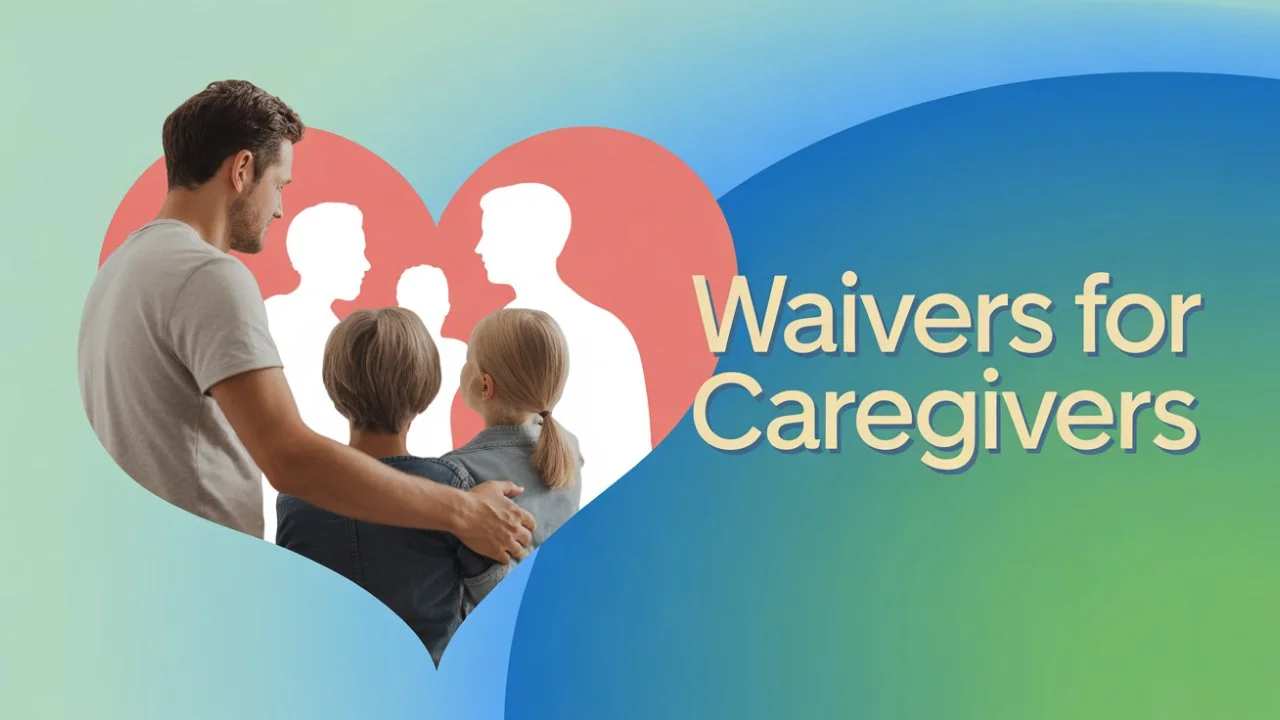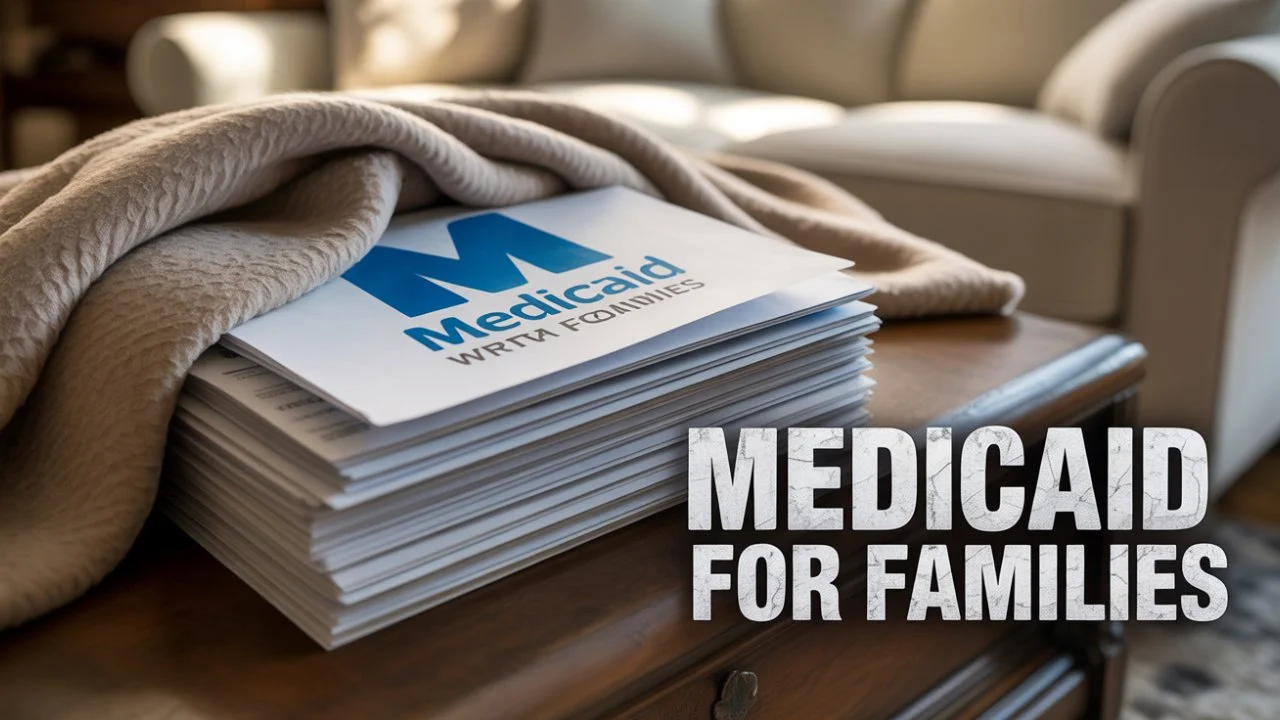Medicaid Waiver Programs for Family Caregivers
Family caregivers play a vital role in helping loved ones remain at home instead of moving into a nursing home. Yet many caregivers face financial challenges while providing daily care. Medicaid waiver programs can help. These programs offer a way for family members to get paid for caregiving. At Paid.Care, we help families understand how these programs work and how to apply.
This guide explains what a Medicaid waiver for family caregivers is, how it supports caregivers, how to apply, and what to expect. You’ll also learn about eligibility and get answers to common questions.
What Are Medicaid Waiver Programs?
Medicaid waiver programs allow states to use Medicaid funds in ways not normally allowed under federal rules. Instead of only covering care in a nursing home, waivers fund home and community based services (HCBS). This helps more people stay at home and avoid institutional care.
For family caregivers, these programs can include medicaid caregiver pay, respite care, home modifications, and support services. Many programs also offer training and resources to help family members provide better care.
Waivers are often called Home and Community-Based Services (HCBS) waivers, 1915(c) waivers, or simply Medicaid waivers. Every state runs its own paid family caregiver programs, so the rules and benefits vary. But the goal is the same: keep people in their homes while supporting caregivers.
Benefits of Medicaid Waiver Programs for Family Caregivers
Medicaid waivers help both caregivers and care recipients. Here are the key benefits:
Get paid to care for family member
Many waivers allow family members to receive medicaid caregiver income for providing in-home care. This helps replace lost wages and ease financial stress.Respite care for caregivers
Waivers often fund respite services so caregivers can take breaks, rest, and manage stress.Home modifications and supplies
Programs may cover safety equipment, medical supplies, and accessibility improvements.In-home supportive services for family caregivers
States may provide help with meal delivery, housekeeping, and personal care, reducing caregiver workload.
These benefits are part of a growing network of family caregiver support programs designed to improve caregiver well-being while keeping loved ones safe at home.
Medicaid Waiver Eligibility
To qualify for a Medicaid waiver for family caregivers, both the caregiver and the care recipient must meet certain requirements:
The care recipient must qualify for Medicaid under state rules for income and assets.
The care recipient must require a level of care that would otherwise justify a nursing home.
The caregiver must pass a caregiver background check and meet any Medicaid waiver training requirements.
Care must be provided in a home or community setting, not an institution.
Some states exclude spouses from being paid caregivers, while others allow it. Each program has its own definition of family caregiver, which may include adult children, siblings, or other relatives.
Understanding medicaid waiver eligibility is an important step in applying. Paid.Care can help you determine if you and your loved one qualify.
How to Apply for Medicaid Waiver
Knowing how to apply for medicaid waiver can save you time and reduce stress. Here’s a simple step-by-step guide:
Confirm Medicaid eligibility
Make sure the care recipient qualifies for Medicaid in your state. Contact your local Medicaid office for details.Research caregiver programs in your state
Each state offers unique caregiver compensation programs by state. Programs may have different names and slightly different benefits.Complete a needs assessment
The state usually sends a social worker to evaluate the care recipient’s needs and determine services.Choose self-directed care
If available, select self-directed care medicaid options, which let the care recipient hire and pay a caregiver of choice — often a family member.Submit your application
Fill out the medicaid caregiver application process forms and provide all required documentation.Complete any required training
Some states require training or certification for caregivers before payment begins.Start tracking your care
Keep records of your hours, tasks, and expenses. This helps with both payment and caregiver tax implications.
At Paid.Care, we help you navigate this process and connect you with the right program.
Medicaid Waiver Programs in Different States
Below are examples of paid caregiving through medicaid programs in select states:
California: In-Home Supportive Services (IHSS) provides payments to family caregivers.
New York: Consumer Directed Personal Assistance Program (CDPAP) lets Medicaid recipients hire family members.
Pennsylvania: Community HealthChoices covers in-home care and family caregiver pay.
Texas: STAR+PLUS Waiver offers HCBS with family caregiver payments.
Florida: Long-Term Care Waiver funds home care and family caregiver services.
If you don’t see your state here, Paid.Care can help you find your local paid family caregiver programs.
Tips for Family Caregivers
Caring for an aging or disabled loved one is rewarding but can also bring challenges. Here are tips for managing your role:
Use respite care for caregivers to rest and recover.
Join caregiver support groups or reach out to organizations like AARP caregiver resources and Family Caregiver Alliance for help.
Take care of yourself with caregiver stress management practices.
Learn about staying at home vs nursing home care so you can make informed decisions.
Be aware of caregiver tax implications when filing taxes.
Paid.Care supports you with information and guidance every step of the way.
Common Questions About Medicaid Waivers
Can family members get paid for caregiving?
Yes, in many states family members can receive medicaid caregiver pay for caring for a loved one. Rules vary, so check your state’s programs.
What are caregiver pay rates through Medicaid?
Caregiver pay rates medicaid offers depend on your state, your loved one’s care level, and local wage standards. Rates are typically similar to home health aide wages.
Are Medicaid caregiver payments taxable?
Payments are usually considered taxable income, though some exceptions apply. Consult a tax professional about caregiver tax implications.
Do I need training to become a paid caregiver?
Some programs have medicaid waiver training requirements, while others do not. Training often covers safety, medication, and recordkeeping.
How long does it take to get approved?
Approval times vary by state but can take several weeks to a few months.
Get Paid to Care for Family Member With Paid.Care
Caring for a loved one is meaningful work — and you deserve recognition and support. Whether you’re caregiving for aging parents, an adult child with special needs, or another family member, Medicaid waivers can help you get the help you need.
At Paid.Care, we help you find the right medicaid waiver programs, complete your medicaid caregiver application process, and access the resources you need — from income support to in-home supportive services for family caregivers.
Visit Paid.Care today to learn how you can get paid to care for family member while keeping them at home and safe.
FAQs
-
Medicaid waiver programs let states use Medicaid funds to pay for care outside of nursing homes. They help family caregivers by providing financial compensation, respite care, home modifications, and other support services. Many programs allow family members to receive medicaid caregiver pay for providing daily care, making it easier to keep loved ones at home.
-
Eligibility depends on state rules. Generally, the care recipient must qualify for Medicaid, have a medical need for nursing-level care, and live at home. Caregivers must meet state requirements, which may include passing a caregiver background check and completing any required training. Check your state’s specific medicaid waiver eligibility guidelines for details.
-
You’ll start by confirming the care recipient’s Medicaid eligibility, then apply through your state’s Medicaid office or Department of Social Services. The process includes an assessment of the care recipient’s needs, submitting required forms, and choosing a self-directed care option if available. Paid.Care can guide you through the full medicaid caregiver application process step by step.
-
Caregiver pay rates Medicaid programs offer vary by state, level of care needed, and local wage standards. Some states pay hourly rates similar to home health aides. Other programs offer a monthly stipend. It’s important to track your hours and tasks to ensure proper payment. Paid.Care can help you understand rates in your state and what to expect.




